We have much more to do and your continued support is needed now more than ever.
101 Years Isn’t Enough
Why the Migratory Bird Protection Act is necessary for a second century of success
At the turn of the twentieth century, the future did not look bright for birds. Due to overhunting, habitat loss and unregulated trade, millions of birds across America were killed and some species even became extinct.
Then on July 3 of 1918, the Migratory Bird Treaty Act (MBTA) became law and put an end to unregulated trade, limited overhunting, supported wildlife habitat, and set in motion a century of protections for migratory birds. The MBTA has since helped underpin the nation’s bird conservation efforts, protecting over 1,000 species from harm.
Unfortunately for birds, this bedrock environmental legislation is now under threat. In April 2018 the U.S. Department of Interior issued guidance signaling that it would no longer enforce the Migratory Bird Treaty Act except in cases of purposefully causing death and harm. This unprecedented legal opinion turns back the clock, voiding essential protections for migratory birds. Luckily, conservationists once again took note, and a newly introduced bill is poised to pipe up for migratory birds.
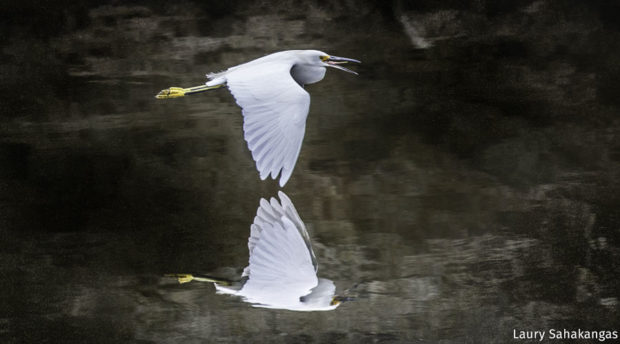
The Migratory Bird Protection Act (MBPA) can stop the reinterpretation of the law, and advance conservation for the future of migratory birds.
If passed H.R. 5552 will affirm that the Migratory Bird Treaty Act’s prohibition on the unauthorized killing of migratory birds includes incidental harm and kill by commercial activities. The proposed law will help minimize certain industrial hazards, incentivize best management practices and, create an incidental take permit to provide clear guidance for industry, and advance bird conservation.
In order to underscore the importance of passing the Migratory Bird Protection Act we’ve compiled a list of a few birds who’s futures have been fought for, and until recently, ensured by the Migratory Bird Treaty Act. These animals were each threatened, recovered, and are now at risk again.
Learn what a century of protections have meant for migratory birds so that you can be the voice they need today.
Snowy Egret
1918
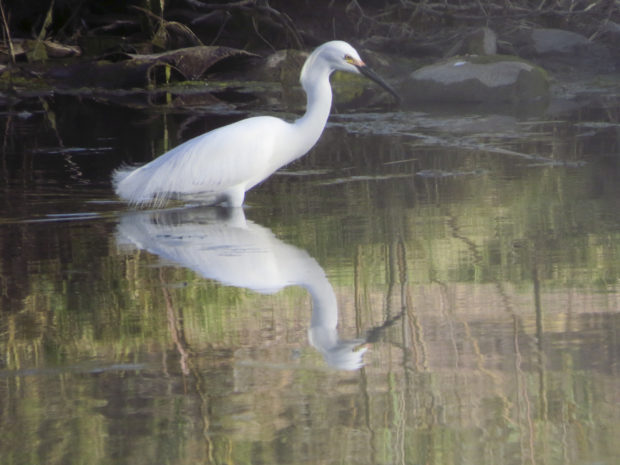
The snowy egret was hunted to near-extinction in the late 1800s for their highly valued feathers at $32 per ounce in 1886. Their disappearance motivated citizens and lawmakers to take action, passing the MBTA, an early win in the conservationist movement. This graceful waterbird is once again commonly spotted along the east coast. They rely on wetland ecosystems to fish and forage in the shallow waters of estuaries or marshes, but have also been sighted foraging in unexpected areas such as wastewater areas and drainage ditches where they are more vulnerable to the effects of pollution.
Wood Duck
1935
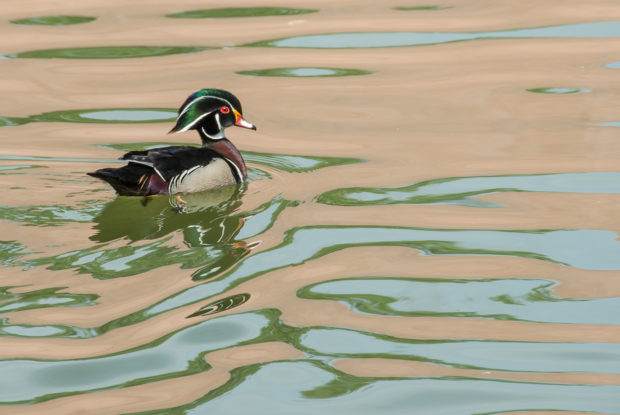
In 1918 the Migratory Bird Treaty Act abolished the unregulated hunting of all migratory birds. Hunting for commercial markets and habitat loss brought birds such as the eye-catching wood duck to the brink of extinction. About a decade after the MBTA laid ground, National Wildlife Federation founder Ding Darling helped establish the Federal Duck Stamp. This stamp purchased by all waterfowl hunters, has helped raise the necessary funds to preserve wetland habitats. In part due to the Duck Stamp’s success, just 23 years after all migratory duck hunting had been abolished, the wood duck hunting season reopened in 1941.
Hermit Warbler
1950s
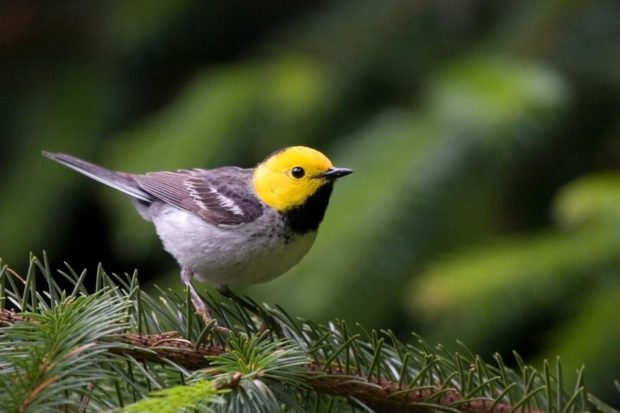
The palm-sized hermit warbler lives in some of the tallest trees on the planet in California, Oregon, and Washington. In the 1950s and 1960s this small songbird faced habitat loss from deforestation. Lumber production in California peaked in the 1950s with the post-World War II housing boom, and the tall trees that were home to the birds were logged for a different kind of resident. Thanks to conservation efforts, areas like the eastern slope of the Kings Range in California were acquired by the federal government and expanded safe habitat for the Douglass fir denizens.
Today the hermit warbler can seek refuge in many federally protected areas including Olympic National Park, Mount Hood National Forest, Kings Canyon National Recreation Area, Yosemite, Kings Canyon and Sequoia national parks.
Tufted Puffin
1989
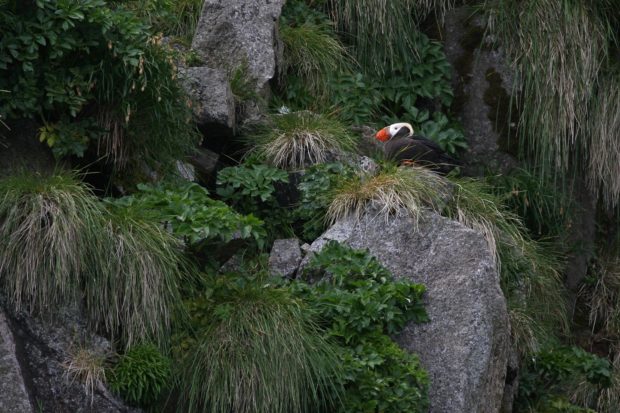
Catastrophe struck ground on March 24, 1989, when the Exxon Valdez oil tanker spilled 11 million gallons of oil into Prince William Sound. This environmental nightmare killed an estimated 250,000 seabirds including mures, kittiwakes, and puffins. Oil spilled by tankers can damage puffins waterproofing feathers causing them to die from exposure in cold temperatures. Exxon was required by law to clean up after the oil spill, paying $1.8 billion for habitat restoration and personal damages. Under the current reinterpretation of the MBTA, if an incident like the Exxon Valdez oil spill occurred today, the company responsible would have no financial responsibility for their impact on migratory bird species.
Royal Tern
2020

Currently, in Virginia, the Hampton Roads Bridge Tunnel Expansion Project is estimated to cause a loss of nesting habitat for more than 25,000 seabird adults and chicks. Because of the reinterpretation of the MBTA, a permit is no longer required for the incidental harm or killing of birds, so project plans to temporarily install machinery on the nesting island are going unaddressed. Meanwhile, a readily available solution to avoid harm, provided in the project’s Natural Resources Technical Report, is to use sand from dredging operations to create new nesting habitat nearby.
This is an active example of why the MBPA needs to be passed—to reinforce and reaffirm the protections originally granted for birds so that they don’t face avoidable harm like this again. While the MBPA will not eliminate industrial harm, it will provide the necessary means to minimize harm—through best practices, and payments to compensate for unavoidable or unexpected harm to birds.
Now is the time to shape the next 100 years of migratory bird conservation. Please join us in calling on members of Congress to pass the Migratory Bird Protection Act for a safer and more dependable future for migratory birds.
Take Action!






















